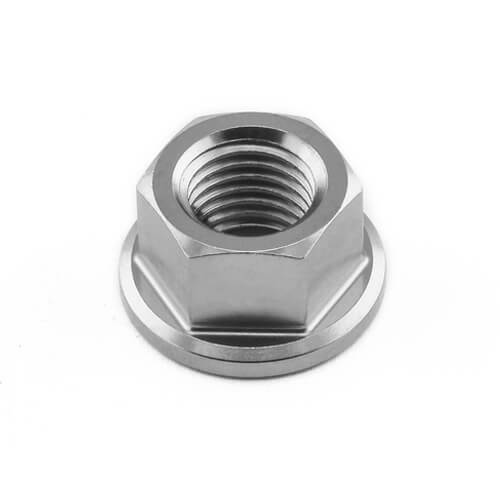This website uses cookies so that we can provide you with the best user experience possible. Cookie information is stored in your browser and performs functions such as recognising you when you return to our website and helping our team to understand which sections of the website you find most interesting and useful.
- Home
- Materials
- CNC Machining Metal
- Stainless Steel
- Stainless Steel 316L
Stainless Steel 316L

Material Type
Metal
Material Name
Stainless Steel 316L
Alternative Names
S31603 | 1.4404 | X2CrNiMo17-12-2
Process Compatibility
CNC Milling, CNC Turning
introduction
Stainless Steel 316L in CNC Machining

Stainless Steel 316L is a popular austenitic stainless steel in CNC machining due to its excellent corrosion resistance, high strength, and versatility.
316L is nearly the same as 316; its lower carbon content is the only distinction. Its carbon content is typically around 0.03% to 0.035%, while 316 has 0.08% to 0.10%. Additionally, it doesn't need post-weld annealing. This stainless steel is commonly employed in various industries, including chemical and petrochemical, food processing, pharmaceuticals, medical devices, jewelry, luxury watches (especially diver's watches), potable water piping, wastewater treatment, marine applications, and architectural projects near the seashore or in urban areas.
While Stainless Steel 316L is generally machinable, it is considered less machinable than some other stainless steel grades. Proper tooling, cutting speeds, and feeds are important for achieving good results. We use a suitable coolant or lubricant to dissipate heat generated during machining and to improve tool life. This is particularly important due to the material's tendency to work harden. Stainless Steel 316L exhibits good dimensional stability during and after machining. We also consider post-machining processes that may affect tolerances.
Properties
Properties Table of Stainless Steel 316L
| MECHANICAL PROPERTIES | |
|---|---|
| Ultimate Tensile Strength | 480-580 MPa |
| Yield Strength | 170-230 MPa |
| Young's Modulus(Elasticity) | 190-205 GPa |
| Elongation at Break | 40-60% |
| Physical Properties | |
| Corrosion Resistance | Excellent |
| Magnetism | Non-Magnetic |
| UV Resistance | Excellent |
| Weldability | Excellent |
| Thermal Properties | |
| Maximum Service Temperature | 750-925 °C |
| Thermal Expansion Coefficient | 15-16 x 10^-6/°C |
| Thermal Conductivity | 13-16 W/(m·°C) |
| Electrical Properties | |
| Electrical Resistivity | 69-81 μΩ*cm |
TECHNOLOGY OVERVIEW
Basic Knowledge of Stainless Steel 316L
What is Stainless Steel 316L?
316L stainless steel, also known as A4 or marine grade stainless steel, is a widely used austenitic stainless steel, ranking second after 304/A2 stainless steel. Its main components are chromium (16–18%), nickel (10–12%), and molybdenum (2–3%), with small amounts of silicon, phosphorus, and sulfur.
The addition of molybdenum enhances its corrosion resistance, making it more resistant to localized corrosive attack by chlorides and general corrosion by reducing acids compared to 304. 316L is a low-carbon version of 316 stainless steel, and when cold worked, it can achieve high yield and tensile strengths similar to Duplex stainless grades.
Advantages of Stainless Steel 316L
Excellent corrosion resistance
High-temperature resistance
Strength and durability
Aesthetic appeal
Low carbon content reduces sensitization during welding
Biocompatibility
Ease of fabrication
Hygienic properties
Longevity and low maintenance
Versatility across various industries
Applications of Stainless Steel 316L
Chemical processing equipment
Surgical instruments
Food processing equipment
Marine components
Aerospace parts
Heat exchangers
Oil and gas pipelines
Automotive exhaust systems
Architectural structures
High-quality jewelry
FAQ
Machining Stainless Steel 316L Buying FAQ
Other Materials

Stainless Steel 316
Stainless Steel 316, also known as marine-grade stainless steel, is a popular material in CNC machining due to its good mechanical properties

Stainless Steel 304L
Stainless Steel 304L is a widely used stainless steel alloy known for its corrosion resistance, formability, and weldability.

Stainless Steel 304
Stainless Steel 304 is a commonly used material in CNC machining. It is known for its corrosion resistance and mechanical properties.
Get An Accurate Quote For Your Next Projects
No matter your project is complicated or simple, no matter is metal or plastic, you will get an accurate quotation within 6 hours.
Get A Quote Today